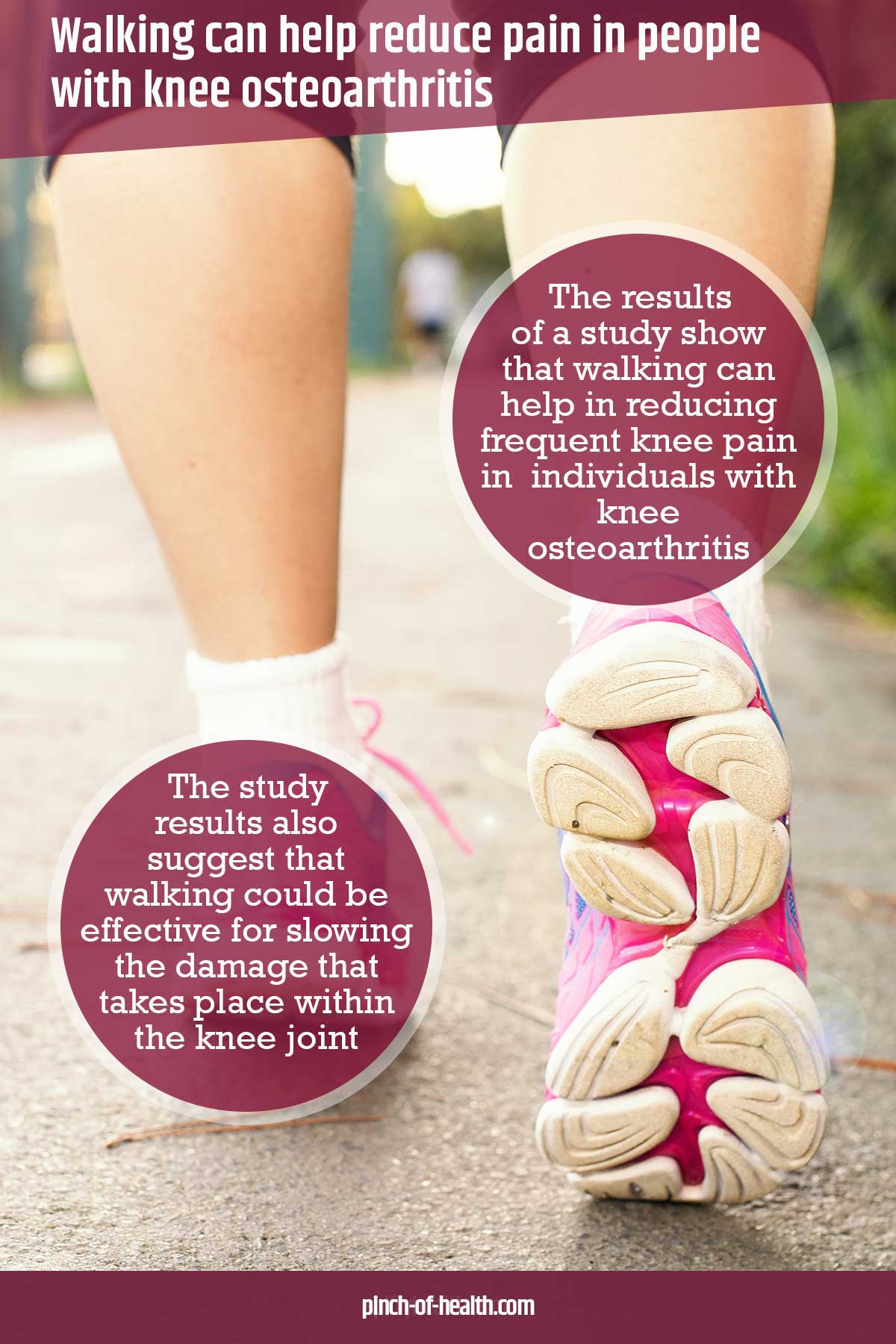The results of a study show that walking can help in reducing frequent knee pain in 50-year and older individuals with a knee osteoarthritis diagnosis, the most common type of arthritis.
The study results also suggest that walking could be effective for slowing the damage that takes place within the knee joint.1✅ JOURNAL REFERENCE
DOI: 10.1002/art.42241
The results of multiyear observational study, the Osteoarthritis Initiative, were examined where the frequency and amount of time participants walked for exercise were self-reported.
Individuals 50 years or older reporting 10 or more exercise sessions were categorized as “walkers” and individuals reporting less were categorized as “non-walkers.”
The individuals in the walking group had a 40% reduced likelihood of frequent knee pain in comparison to non-walkers.
These results are especially useful for individuals who have radiographic osteoarthritis evidence but without daily pain in the knees.
These results support the possibility that walking can help in preventing the onset of knee pain every day. Walking could also slow down osteoarthritis-related damage inside the knee joint.
Walking has additional health benefits which include improved cardiovascular health and reduced risk of some cancers, diabetes, and obesity, the primary reasons for the CDC’s physical activity recommendations, first released in 2008 and modified in 2018.
Walking is an easily accessible activity with very few side effects, as opposed to medications, which generally come with a considerable price tag and risk of side effects.
Individuals with a knee osteoarthritis diagnosis should walk for exercise, especially if they don’t have knee pain every day. If an individual already has knee pain every day, there still may be a benefit, particularly if they have the bow-legged knee type of arthritis.



